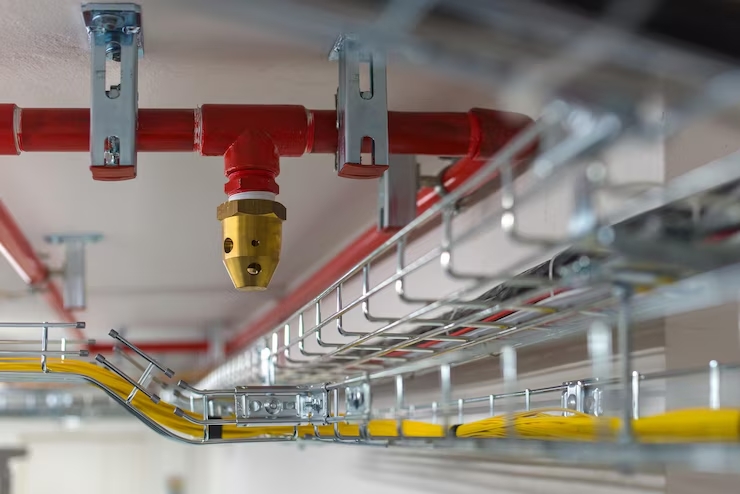Your fire pumps are integral to controlling or extinguishing fires and maintaining safe evacuation routes. Regular fire pump inspections are essential to ensure that your fire sprinkler systems have the necessary water pressure and flow during an emergency. Ideal Fire Services offers expert fire pump inspections, repairs, and maintenance, along with comprehensive documentation and 24/7 on-call support. We also provide additional fire protection solutions to keep your fire pumps and sprinklers in peak condition. A proven method for testing fire pumps involves measuring RPM, GPM, and PSI. This test is conducted at three different flow rates—50%, 100%, and 150% of the pump’s rated capacity.
Common issues like excessive leaks, corrosion, and low pressure highlight the importance of annual inspections and regular maintenance. By staying proactive, you can ensure your fire pump system remains fully functional and ready when you need it most.

Fire Pump Maintenance
For optimal fire pump performance and safety, trust certified professionals like Ideal Fire Protection. Complying with the strict NFPA Codes and Guidelines, our expert team conducts thorough weekly, monthly, and annual inspections, as required by law.
At Ideal Fire, we provide top-tier, cost-effective fire pump inspection services in full compliance with NFPA 25. Count on our experienced team for all your fire pump inspection and repair needs to ensure your system remains in peak condition.
How A Fire Pump Services Works
What are the main types of Fire Pumps?
Fire Pumps are required in most large commercial and residential buildings. They are especially crucial in high-rise buildings where higher floors are beyond the pumping capacity of fire departments.
A fire pump system is a critical fire safety element and there are many requirements to consider before choosing a system.
The certified team at Ideal Fire are experts at evaluating your building’s requirements and they will help you choose a pump system that is compliant and best-suited for your location.
Fire Pump Maintenance
For optimal fire pump system performance and safety, it’s crucial to rely on certified professionals like IDEAL Fire Protection. Adhering to the stringent NFPA Codes and Guidelines, our expert team ensures that your fire pump systems undergoes thorough weekly, monthly, and annual inspections, as mandated by law. At Ideal Fire, we offer top-notch and cost-effective fire pump inspection services in compliance with NFPA 25. Trust our fire pump company for all your fire pump inspection and repair needs to keep your system in peak condition.
Fire Pump Inspection Schedule
Weekly inspection:
- Inspection of pump house/room
- Inspection of pump system conditions
- Inspection of electrical system conditions
- No-flow (churn) test (Diesel fire pumps only)
Monthly inspection:
- No-flow (churn) test (Electric fire pumps)
Annual inspection:
- Inspection of the pump operation

